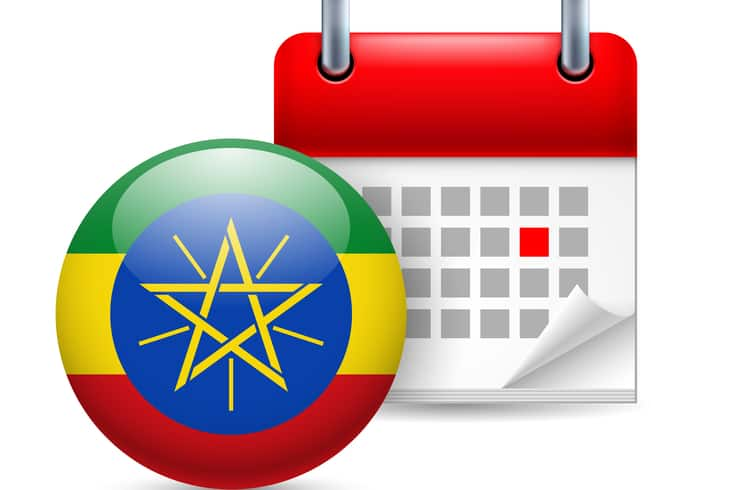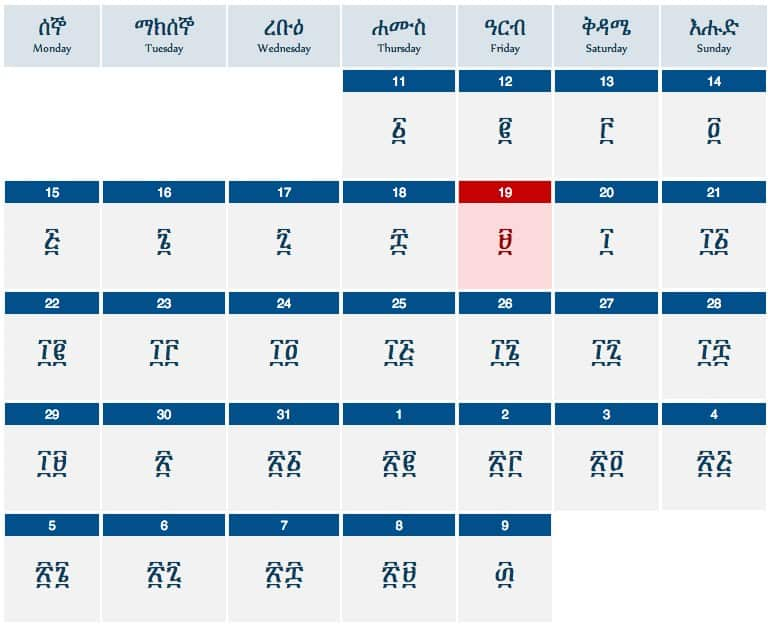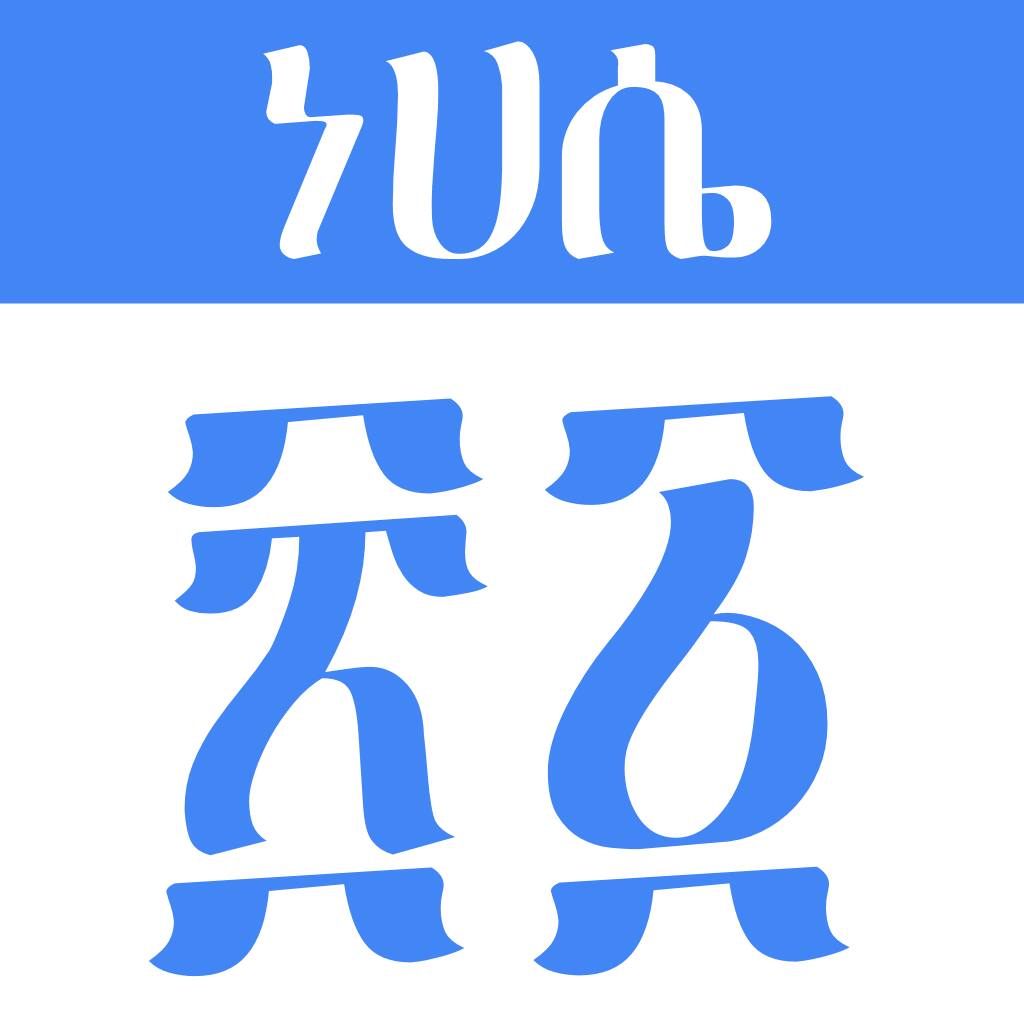The Ethiopian calendar has been an attraction to many since people are fascinated to know about it. It has 13 months and is seven years behind the universal calendar. This calendar belongs to the country's main religion, including the Ethiopian Orthodox Tewahedo Church, one of the few pre-colonial churches in Sub-Saharan Africa. About 36 million people are members of this church.

Other churches that follow this country's annual schedule include the Eastern Catholic churches and the Eastern Protestant Christian Pentay. The article will give more details about the Ethiopian calendar months and its holidays.
Ethiopian calendar name
This annual schedule original name is in Amharic and is written as yä'Ityoṗṗya zëmän aḳoṭaṭär. The Amharic language is an Ethio-Semitic language, the subgrouping within the Afroasiatic languages' Semitic branch. It is spoken as the first language by the Amharas and as a lingua franca by other tribes living in the country.
Ethiopian calendar year

It bears similarities to the Egyptian Coptic calendar, having 13 months and 365 days (366 days in a leap year) in a year. It is always seven and eight years behind the Gregorian (Western) and Eastern Orthodox Church annual schedule on September and December and eight years four months behind during January and August. Therefore, followers of yä'Ityoṗṗya zëmän aḳoṭaṭär celebrated a new millennium on September 12, 2007, of the Gregorian.
The Gregorian calendar was introduced by Pope Gregory XII, the head of the Catholic Church from 1572 to 1585, as a minor revision to the Julian calendar. He made these changes because Easter was drifting away from its springtime and lost its relation with the Jewish Passover. This yearly schedule by Pope Gregory reduced the average year from 365.25 days to 365.245 days and adjusting the tropical year that the inaccuracy had caused during the intervening centuries. Since 1582, his annual timetable became the religious, cultural, and civic calendar for most people.
Before that, the Julian calendar was proposed by Julius Cesar as a reform of the Roman calendar. It took effect on 1 January AUC 709 BC by edict. It was designed with the aid of Greek mathematicians and astronomers. It was used in the Roman world and Europe for more than 1600 years.
Due to ideological differences, the Eastern Orthodox Churches did not accept the Gregorian one and continued to use lunar tables for calculating Easter together with other holidays.
What year is it in Ethiopia?
According to the Gregorian calendar, it is 2021. But according to the Ethiopian calendar, it is 2013.
Here are all the holidays for the 2021 Ethiopian calendar:
- 7 January- Ethiopian Christmas Day
- 19 January- Epiphany/Timkat
- 2 March- Adwa Victory Day
- 20 March- March Equinox
- 30 April- Ethiopian Good Friday
- 1 May- Labour Day
- 2 May- Ethiopian Easter Sunday
- 3 May- Patriot's Day
- 13 May- Eid ul Fitr
- 28 May- Derg Downfall Day
- 21 June- June Solstice
- 20 July- Eid al-Adha
- 22 September- September Equinox
- 27 September- Meskel
- 19 October- The Prophet's Birthday
- 21 December- December Solstice
Ethiopian calendar today

The Ethiopian calendar 2012 ran from September 12, 2019, to September 10, 2020, following the Gregorian schedule. The Ethiopian calendar 2013 runs from September 11, 2020, to September 10, 2021. The difference in days is because the year 2020 was a leap year.
Ethiopian calendar download is possible on Google Play Store or the Apple Store. You can also get the Ethiopian calendar PDF format on Metaappz.com. You can visit Melaku.ml to get the Ethiopian calendar converter.
Frequently asked questions
This 13-month almanac has raised a lot of questions on how it works. It has even become one of the best attractions for tourists in Ethiopia and Eritrea, to whom this almanac has become part of their culture. Here are answers to the most asked questions about the yä'Ityoṗṗya zëmän aḳoṭaṭär.
What is the 13th month in Ethiopia called?
Paugme is the name of the 13th month of the year in the Yä'Ityoṗṗya zëmän aḳoṭaṭär. This name is derived from the Greek word epogme, which means 'days forgotten when the year is calculated.' This month has five days or six days in a leap year.
What year is it in Ethiopia in 2020?
On January 1, 2020, as per the Gregorian almanac, it was Wednesday, Tahsas 22, 2012, in Ethiopia. However, as the year 2020 came to an end, it was already Thursday, Tahsas 22, 2013. Considering 2020 was a leap year, there were 366 days.
Is it 2012 in the Ethiopian calendar?
In January 2021, it is Tir 2013 according to the Yä'Ityoṗṗya zëmän aḳoṭaṭär.
So there you have it, all the details about the Ethiopian calendar. Although the schedules mentioned have different counting systems, they also have the same number of days in a year, which is 365 or 366 in a leap year.
READ ALSO: What is the most spoken language in South Africa? Top 11 SA languages
We reported on the most spoken languages in South Africa. South Africa is considered the rainbow nation since it is one of the most ethnically diverse nations on the continent. Centuries ago, the country was majorly inhabited by the pastoral Khoikhoi, the hunter-gatherer San, Xhosa, and Zulu, which is the most spoken language in South Africa.
For decades, the languages recognised by the constitution included English, European-Dutch, and Afrikaans. For many years, most of the local varieties were disregarded, despite being spoken by more than 80% of the country’s population. So, how many official languages in South Africa are recognised by the constitution? Find out about the top 11 languages in South Africa in the article.
ncG1vNJzZmiaop6yp7jYZ5qoZqqWfHp%2BmG9nZq%2BYrnqmwMeipqmhkaN6pK3LnqWdmaJihG7FxJqprGaYqbqt